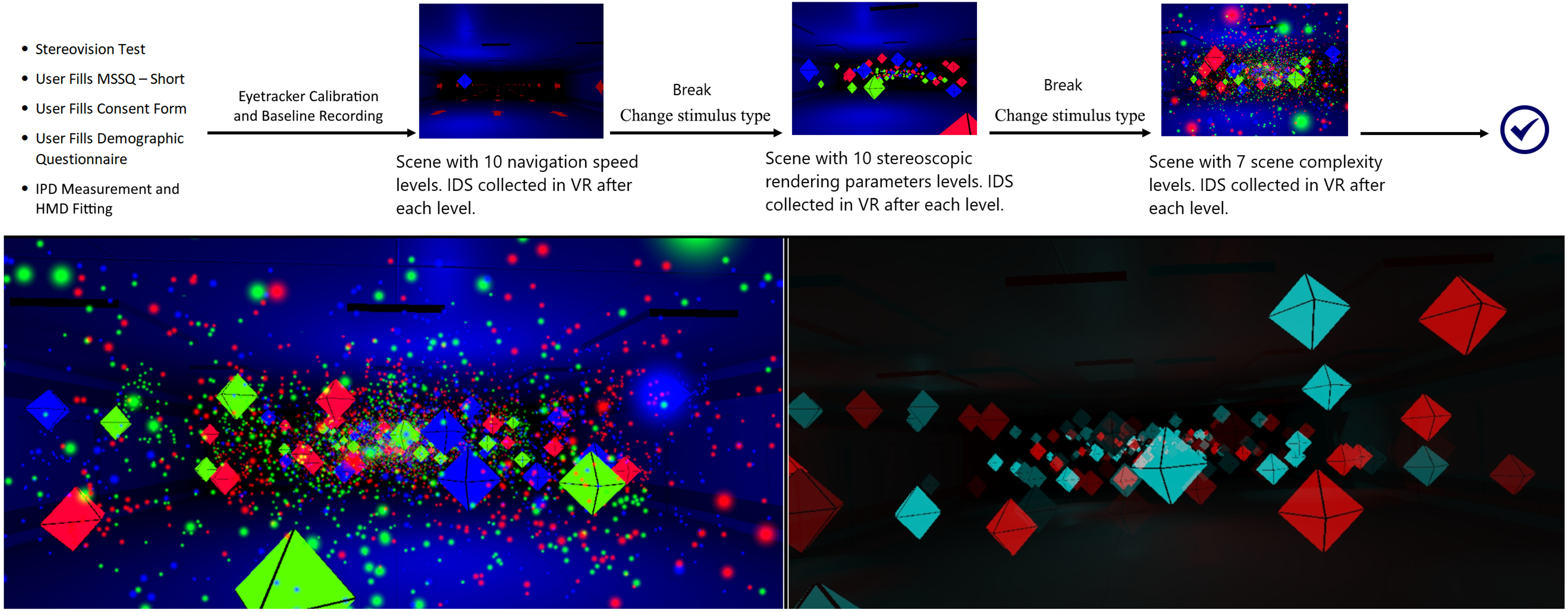

Paper
Alper Ozkan, Ufuk Celikcan. "The relationship between cybersickness and eye-activity in response to varying speed, scene complexity and stereoscopic VR parameters", International Journal of Human-Computer Studies (2023).
Preprint (with low-res images) | Published Version
Please kindly cite our paper in your publication if you use this dataset or code:
@article{OZKAN2023103039,
title = {The relationship between cybersickness and eye-activity in response to varying speed, scene complexity and stereoscopic VR parameters},
journal = {International Journal of Human-Computer Studies},
volume = {176},
pages = {103039},
year = {2023},
issn = {1071-5819},
doi = {https://doi.org/10.1016/j.ijhcs.2023.103039},
url = {https://www.sciencedirect.com/science/article/pii/S1071581923000484},
author = {Alper Ozkan and Ufuk Celikcan}
}
Abstract
Eye trackers are non-invasive devices that can be integrated into VR head-mounted displays and the data they seamlessly provide can be instrumental in mitigating cybersickness. However, the connection of eye-activity to cybersickness has not been studied in a broad sense, where the effects of different VR content factors causing cybersickness are examined together. Addressing this gap, we present an extensive investigation of the relationship between eye-activity and cybersickness in response to three major cybersickness factors – navigation speed, scene complexity and stereoscopic rendering – simulated in varied severity. Our findings reveal multiple links between several eye-activity features and user-reported discomfort reports, the most significant of which are associated with speed levels, highlighting the relationship between feeling of vection and eye-activity. The evaluation also established significant differences in eye-activity response with different stimulus types and time spent in VR, suggesting an accumulation effect. Furthermore, the regression analysis hints that blink frequency can be utilized as a significant predictor of cybersickness, regardless of time spent in VR.